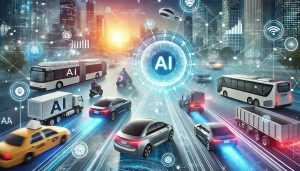
How AI is reshaping the job market. The contemporary labor market is changing significantly and intricately due to artificial intelligence (AI). On the one hand, some jobs have been displaced by automation and artificial intelligence, especially those involving routine or repetitive labor. Traditional employment arrangements have been redefined as a result of this transformation, which has resulted in job displacement across multiple industries.
HOW AI IS RESHAPING THE JOB MARKET
However, AI is also a significant force behind the development of new jobs. New positions that did not exist a few years ago, such as machine learning engineer and AI ethicist, have been made possible by it. AI’s influence on the workforce is becoming more significant as it develops. Professionals, job seekers, and educators navigating this changing environment must keep up with these developments. To learn more about how AI is influencing work and employment possibilities, continue reading.
1. Experience and customer service

Chatbots driven by natural language processing algorithms are increasingly often used by customer support helplines. By gathering information about client concerns, these bots help support agents respond to questions more quickly.
2. Insurance and banking
By automating paperwork, accelerating problem solving, and enhancing customer service, artificial intelligence is simplifying banking. Additionally, it improves security by more successfully identifying any fraudulent transactions.
3. Transportation

One of AI’s most revolutionary uses is autonomous driving. Uber is investigating the possibilities of self-driving cars, while others such as Tesla have introduced them into the public. Beyond personal transportation, self-driving trucks promise reduced labor costs and faster deliveries by doing away with rest stops.
4. Engineer in machine learning
Algorithms that allow systems to learn from data and gradually improve their performance are created and improved by Machine learning engineers . They assist AI in simulating human learning processes by creating, evaluating, and refining these models. Machine learning is changing businesses through applications like automation, facial recognition, and predictive analytics.
5. AI moralist
An AI ethicist makes sure that AI technologies are developed, implemented, and used in a responsible and ethical . They assess the possible ethical, legal, and social ramifications of AI systems while taking bias, privacy, and transparency into account. AI ethicists work to minimize harm and advance justice while ensuring that AI serves society.
6. AI prompt engineer
To maximize the responses produced by AI systems, an AI prompt engineer creates and improves prompts. They concentrate on creating efficient, understandable input that directs the AI to provide precise, pertinent, and contextually suitable outputs.
7. Professional in natural language processing

Chatbot developers focus on AI and NLP to build bots that can comprehend users, speak organically, and offer helpful support. Their knowledge is more important than ever since these developers are critical to creating efficient, human-like interactions with virtual assistants and automated customer care.
8. Programmers on computers
AI can even automate some programming chores, but more complicated tasks still need a human touch.
8. Research analysts

This can concentrate on more in-depth interpretation by using automation to manage data collecting and early analysis.
Summary
The workforce is being drastically changed by artificial intelligence, which is having a profound impact on a variety of industries, employment roles, and workplace procedures. Businesses are being forced to reconsider how they recruit, nurture, and manage talent as a result of the growth of automation, machine learning, and AI-powered decision-making tools. Even though AI promotes creativity and efficiency, it also poses important concerns about job displacement, growing skill gaps, and maintaining the human aspect in a tech-driven workplace.